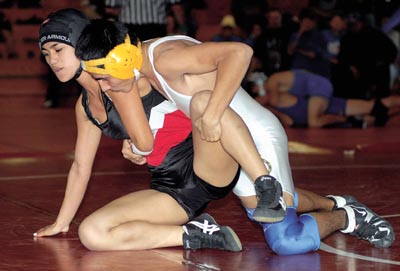High school ball players who recently purchased a new aluminum
bat this summer may never get to use it after the California
Interscholastic Federation, the state’s governing body for high
school athletics, recently announced new safety standards for the
upcoming 2010-11 season.
HOLLISTER
High school ball players who recently purchased a new aluminum bat this summer may never get to use it after the California Interscholastic Federation, the state’s governing body for high school athletics, recently announced new safety standards for the upcoming 2010-11 season.
The new adopted standards by the CIF, which are sure to add another twist to the ongoing debate regarding the safety of metal bats, will require all non-wood bats to meet BBCOR standards next season, one year before a national standard was set to take place at the high-school level in 2012.
The “BBCOR” (Batted Ball Coefficient of Restitution) standard, considered more rigorous than its predecessor, is said to measure the “trampoline” effect of a batted ball — not the exit speed of the current “BESR” (Ball Exit Speed Ratio) standard — and is designed to replicate more closely the performance of a wood bat.
“It’s something that’s going to be across the board, not where one league does it and another doesn’t,” said Shorty Gutierrez, varsity baseball manager at Sobrato.
“This says, ‘This is something we need to do for the safety of the kids.’ It’s official.”
The BBCOR standard, while limiting the speed of batted balls, can also prevent performance enhancements made to the bat through bat rolling, and will be affixed with a stamp or decal to show the bat hasn’t been tampered.
“I think anything to make the game safer is in the best interest of our student-athletes,” said Mark Cummins, varsity baseball coach at Live Oak. “The way things are going, there were some incidents in games that were detrimental to players. Anything we can do to make it safer is better.”
While the new standards were already scheduled to begin at the collegiate level on Jan. 1, 2011, the CIF’s one-year headstart on the national high-school standards stems from the events in early March when a Marin Catholic pitcher was nearly killed from a line drive to the head — the batted ball coming off a metal bat.
District 6 Assemblyman Jared Huffman, who represents Marin and parts of Sonoma counties, called for a one-year moratorium to ban all non-wood bats from high school games throughout the state following the event, while in July, the National Federation of State High School Associations called for all composite bats to meet the BBCOR performance standard starting next season.
In order to improve safety standards while also limit the financial liability of its student-athletes, the CIF accelerated the new high school rules by one year so players didn’t have to purchase wood bats next season, then BBCOR-compliant bats the following year.
“In addition to addressing safety issues raised by legislators, our approach is intended to minimize the fiscal impact on schools and families, who could otherwise have been required to purchase expensive bats twice — for both the 2011 and 2012 seasons,” CIF Executive Director Marie Ishida said in a statement.
The accelerated standards could very well make recently purchased metal bats useless entering next spring, however. The question will come down to availability, and whether those recently purchased bats meet the minimum BBCOR standards.
“It’s going to affect the kids that just bought new bats last year and now they are going to have to buy new bats again this year,” said varsity manager Ryan Dequin of Gilroy’s Christopher High. “I’m going to meet with the kids early and let them know if they are going to buy a new bat to get the one that has been certified.”
Since the NCAA was scheduled to implement the BBCOR standards at the beginning of next year, the new bats were already in the process of being manufactured. But with the CIF’s new ruling, the demand for the BBCOR bats will increase, perhaps limiting their availability statewide.
If enough bats aren’t available by Jan. 1, the CIF said it will allow aluminum bats that meet the current BESR standard for the 2011 season.
The new BBCOR bats aren’t any cheaper than their BESR predecessors, though, with an average retail price falling in the $300 to $400 range.
“To me, it’s kind of a money-maker for the bat business, you know? I see it in that aspect,” Gutierrez said. “Now, everyone needs to buy new bats, and they are trying to get rid of certain composites and taking away the most dangerous ones.”
Cummins said Live Oak used to purchase one or two bats for the team years ago, but was forced to stop after prices got too high.
“The kids have been on their own,” he said.
“I used to buy a team bat every year,” Gutierrez said. “After they started going for more than $300, I said forget it. It just became one of those things where you’re spending too much for a baseball bat.”










